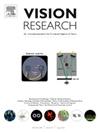Auditory discomfort and visual sensitivity
IF 1.4
4区 心理学
Q4 NEUROSCIENCES
引用次数: 0
Abstract
The field of visual discomfort is fast growing, identifying parameters of visual stimuli that evoke discomfort, their effect on the visual system, and their heightened impact in clinical populations. In contrast, there is little work on auditory discomfort. First, we reviewed the current findings in the field of auditory discomfort and report a preliminary study investigating the effects of uncomfortable sounds on near infrared spectroscopy (NIRS) responses from auditory cortex. Nine participants listened to pure 1 kHz tones that were modulated by a 2 Hz or a 16 Hz sinusoidal wave that made the tone sound as though it wobbled. The oxyhaemoglobin response to the uncomfortable 16 Hz sound was larger and slower compared to the relatively more comfortable 2 Hz sound. This suggests cortical excitability to uncomfortable sounds, similar to the heightened response reported in the visual modality. Second, we assessed the relationship between visual and auditory sensitivity in a large sample (N = 669) of participants who completed the Pattern Glare Test (PGT), the Amsterdam Misophonia Scale, the Hyperacusis Questionnaire, and the Functional Hearing Questionnaire (FHQ). While all measures of auditory sensitivity were significantly correlated with the number of illusions seen in the PGT (.1 > rs < 0.3), the relationship with misophonia was significantly weaker than other comparisons. This highlights that while those who are visually sensitive are more likely to exhibit increased auditory sensitivity, the measures that focus on pain (PGT, hyperacusis, FHQ) may be dissociable from those that rely on emotive discomfort (misophonia). Together, this suggests similar mechanisms underlying auditory and visual discomfort.
听觉不适和视觉敏感
视觉不适领域正在快速发展,识别引起不适的视觉刺激参数,它们对视觉系统的影响,以及它们在临床人群中的高度影响。相比之下,关于听觉不适的研究却很少。首先,我们回顾了目前在听觉不适领域的研究成果,并报道了一项初步研究,探讨了听觉不适声音对听觉皮层近红外光谱(NIRS)反应的影响。九名参与者听的是由2赫兹或16赫兹正弦波调制的纯1千赫的音调,使音调听起来好像在摇晃。与相对舒适的2赫兹声音相比,氧合血红蛋白对不舒服的16赫兹声音的反应更大、更慢。这表明皮层对不舒服的声音具有兴奋性,类似于在视觉模式中报道的增强反应。其次,我们评估了大样本(N = 669)参与者的视觉和听觉敏感性之间的关系,这些参与者完成了模式眩光测试(PGT)、阿姆斯特丹恐音症量表、超听觉问卷和功能性听力问卷(FHQ)。虽然所有的听觉敏感度测量都与PGT中看到的错觉数量显著相关(。1比;rs & lt;0.3),与恐音症的关系明显弱于其他比较。这突出表明,虽然那些视觉敏感的人更有可能表现出听觉敏感性的增强,但专注于疼痛的测量(PGT、听觉亢进、FHQ)可能与那些依赖于情绪不适的测量(恐音症)是分离的。总之,这表明听觉和视觉不适的潜在机制相似。
本文章由计算机程序翻译,如有差异,请以英文原文为准。
求助全文
约1分钟内获得全文
求助全文
来源期刊

Vision Research
医学-神经科学
CiteScore
3.70
自引率
16.70%
发文量
111
审稿时长
66 days
期刊介绍:
Vision Research is a journal devoted to the functional aspects of human, vertebrate and invertebrate vision and publishes experimental and observational studies, reviews, and theoretical and computational analyses. Vision Research also publishes clinical studies relevant to normal visual function and basic research relevant to visual dysfunction or its clinical investigation. Functional aspects of vision is interpreted broadly, ranging from molecular and cellular function to perception and behavior. Detailed descriptions are encouraged but enough introductory background should be included for non-specialists. Theoretical and computational papers should give a sense of order to the facts or point to new verifiable observations. Papers dealing with questions in the history of vision science should stress the development of ideas in the field.
 求助内容:
求助内容: 应助结果提醒方式:
应助结果提醒方式:


